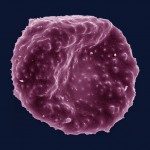Lien vers Pubmed [PMID] – 18851734
BMC Genomics 2008;9:481
BACKGROUND: About 5% of western populations are afflicted by autoimmune diseases many of which are affected by sex hormones. Autoimmune diseases are complex and involve many genes. Identifying these disease-associated genes contributes to development of more effective therapies. Also, association studies frequently imply genomic regions that contain disease-associated genes but fall short of pinpointing these genes. The identification of disease-associated genes has always been challenging and to date there is no universal and effective method developed.
RESULTS: We have developed a method to prioritize disease-associated genes for diseases affected strongly by sex hormones. Our method uses various types of information available for the genes, but no information that directly links genes with the disease. It generates a score for each of the considered genes and ranks genes based on that score. We illustrate our method on early-onset myasthenia gravis (MG) using genes potentially controlled by estrogen and localized in a genomic segment (which contains the MHC and surrounding region) strongly associated with MG. Based on the considered genomic segment 283 genes are ranked for their relevance to MG and responsiveness to estrogen. The top three ranked genes, HLA-G, TAP2 and HLA-DRB1, are implicated in autoimmune diseases, while TAP2 is associated with SNPs characteristic for MG. Within the top 35 prioritized genes our method identifies 90% of the 10 already known MG-associated genes from the considered region without using any information that directly links genes to MG. Among the top eight genes we identified HLA-G and TUBB as new candidates. We show that our ab-initio approach outperforms the other methods for prioritizing disease-associated genes.
CONCLUSION: We have developed a method to prioritize disease-associated genes under the potential control of sex hormones. We demonstrate the success of this method by prioritizing the genes localized in the MHC and surrounding region and evaluating the role of these genes as potential candidates for estrogen control as well as MG. We show that our method outperforms the other methods. The method has a potential to be adapted to prioritize genes relevant to other diseases.

